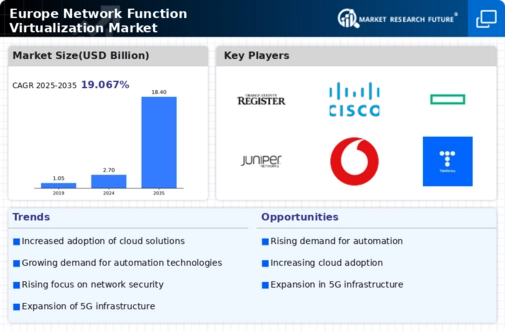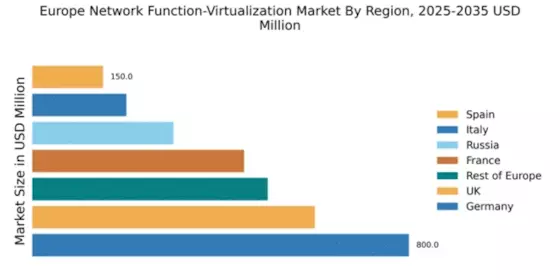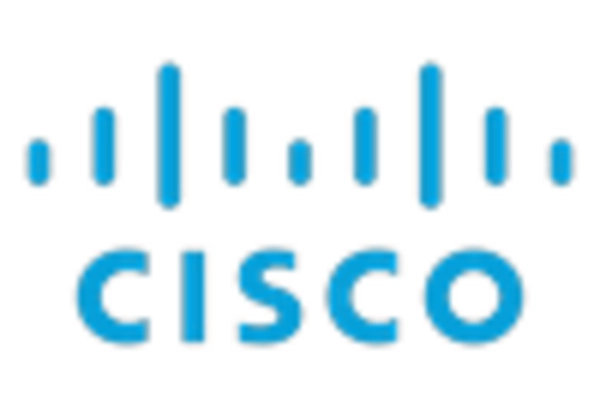Germany : Strong Infrastructure and Innovation Hub
Key markets within Germany include major cities like Berlin, Munich, and Frankfurt, which are hubs for technology and telecommunications. The competitive landscape features significant players such as VMware, Cisco, and Nokia, all vying for market share. Local dynamics are characterized by a strong emphasis on R&D and collaboration between public and private sectors. Industries such as automotive, finance, and healthcare are increasingly adopting NFV solutions to enhance operational efficiency and service delivery.
UK : Innovation and Investment Drive Growth
Key markets include London, Manchester, and Birmingham, where technology adoption is rapidly increasing. The competitive landscape features major players like Ericsson and Cisco, who are actively expanding their presence. The UK market is characterized by a dynamic business environment, with a growing number of startups and established firms collaborating on NFV solutions. Sectors such as finance and media are particularly keen on leveraging NFV for improved service delivery.
France : Strong Demand in Telecom Sector
Key markets include Paris, Lyon, and Marseille, where telecom operators are actively investing in NFV solutions. The competitive landscape features significant players like Nokia and Huawei, who are well-positioned in the market. Local dynamics are influenced by a strong emphasis on regulatory compliance and collaboration among industry stakeholders. The telecom sector, particularly mobile operators, is a primary adopter of NFV technologies to improve service offerings.
Russia : Growth Amidst Regulatory Challenges
Key markets include Moscow and St. Petersburg, where technology adoption is gaining momentum. The competitive landscape features local players alongside international firms like Ericsson and Cisco. The business environment is characterized by a mix of opportunities and challenges, with local companies increasingly collaborating with global players. Industries such as energy and finance are exploring NFV solutions to enhance operational efficiency and service delivery.
Italy : Digital Transformation in Focus
Key markets include Milan, Rome, and Turin, where technology adoption is on the rise. The competitive landscape features major players like Huawei and Nokia, who are expanding their presence in the market. Local dynamics are characterized by a growing emphasis on collaboration between public and private sectors. Industries such as manufacturing and retail are increasingly adopting NFV solutions to improve operational efficiency and customer service.
Spain : Emerging Opportunities in Telecom
Key markets include Madrid and Barcelona, where technology adoption is accelerating. The competitive landscape features players like Cisco and Ericsson, who are actively expanding their offerings. The local business environment is characterized by a mix of opportunities and challenges, with a growing number of startups entering the NFV space. Sectors such as tourism and retail are exploring NFV solutions to enhance customer experiences and operational efficiency.
Rest of Europe : Varied Growth Across Sub-regions
Key markets include cities in countries like the Netherlands, Belgium, and Switzerland, where technology adoption is gaining traction. The competitive landscape features a mix of local and international players, including VMware and Juniper Networks. Local dynamics vary significantly, with some countries experiencing rapid growth while others face regulatory hurdles. Industries such as finance and healthcare are increasingly adopting NFV solutions to improve service delivery and operational efficiency.


















Leave a Comment